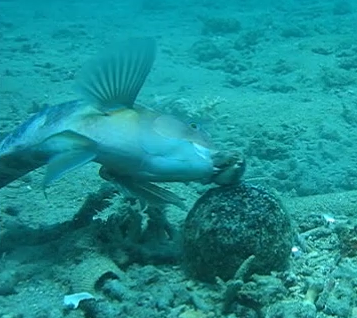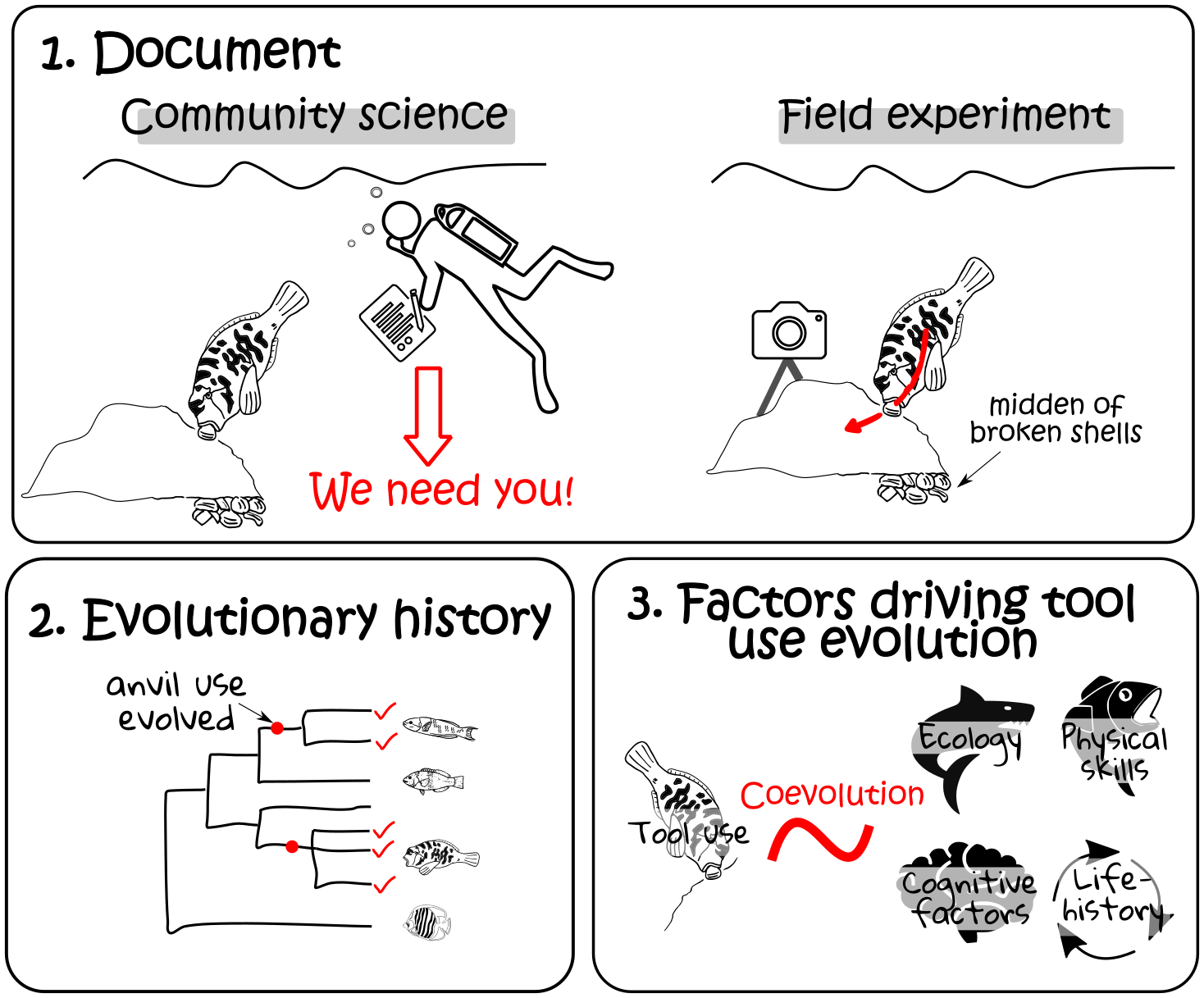.png)
Tool use in fish

Have you ever wondered why humans are able to use tools? Is it because of our big brain? Our capacity to move objects precisely with our hands? In other words, what are the factors needed for an animal to evolve tool use? It is a difficult question to answer because we can't teleport into the past to see what features humans or other animals had when they start using tools. What we can do is determine which species are using tools, compare them to their closely related species that don't use tools, and see if a general trend appears: A feature that is always present in species using tools (bigger brain size, certain limb anatomy, etc). This type of analysis is called comparative phylogenetic analysis.
The problem is that tool use is a rare behaviour in the animal kingdom. It is impossible to draw general trends from a few occurrences! That is why we need to explore tool use in all vertebrate species. 🤯 By studying tool use in fish, we might be able to unravel the factors driving tool use evolution and explain why tool use is a rare behaviour in the animal kingdom given the potential high advantages it provides.

In our research project, we focused on one type of tool use: anvil use. When using an anvil, the fish grabs a prey item (typically an urchin or clam) in its mouth, swims to a specific rock/coral and uses it as an anvil by rapidly and repeatedly bashing the prey item until it breaks. It is a case of tool use as the fish is using an external object to achieve an immediate goal. We believe that the behaviour extends the fish's physical capabilities: It would not be able to crack this clam with its teeth! And it may limit the damage in the mouth from broken shells or urchins.


Anvil use has been described in 15 fish species so far in the scientific litterature. All these species are wrasses, also called labrids because they belong to the Labridae family. A huge family with more than 600 species (twice the number of primate species) and very diverse in terms of ecology, diet and life-history. This provides a great opportunity for comparative analysis! Because we have 1- a lot of occurrences in the evolutionary history where anvil use appeared, and 2- species exhibit diverse features (you can't determine what is special about species using tools if all species have the same features). Anvil use is thus the perfect system to test hypotheses regarding the evolution of tool use.


Anvil use has never been studied. The literature is a list of papers describing anvil use in a species based on the observation of only one or a few individuals. Which species are able to use rocks as anvils to open their prey? Do the species use different techniques? Do all individuals of a species use tools, or only one sex or at a certain period in their lives? We must document anvil use in all species before doing comparative analysis. How will we do that?

We are looking for information and observations of anvil use by fish. Contact us here, thank you 🙏 We will then combine all the observations to obtain an overall picture of anvil use by fish.
We have obtained funding for fieldwork at Ningaloo Reef. Many thanks to the FSBI (a scientific society for fish biology) and the Minderoo Foundation ❤️ Several species described using anvils occur at Ningaloo Reef and we hope to discover many more! The plan is also to document anvil use in many species and to get an idea of its usefulness for a fish.
Now it is time for the comparative analysis! From the literature, we will extract all the important features of species that use tools and closely-related species that do not. We will then statistically test for any correlation between tool use and multiple other features. We expect to find that brain size (whole brain or specific brain areas) is an important factor driving the emergence of anvil use, confirming that tool use evolves as part of an intelligence syndrome. As tool use rarely evolves, we expect to find other factors than cognition involved in anvil use evolution. Physical factors should be involved as using tools require skills and great strength underwater, with the water making every movement more difficult. And we could have some surprises!
Another goal of the project is to deconstruct the image of fish as stupid. Fish are intelligent animals 🧠🐟 Their cognitive abilities are far beyond what most people think. Check out this e-learning to learn more about how smart are fish.